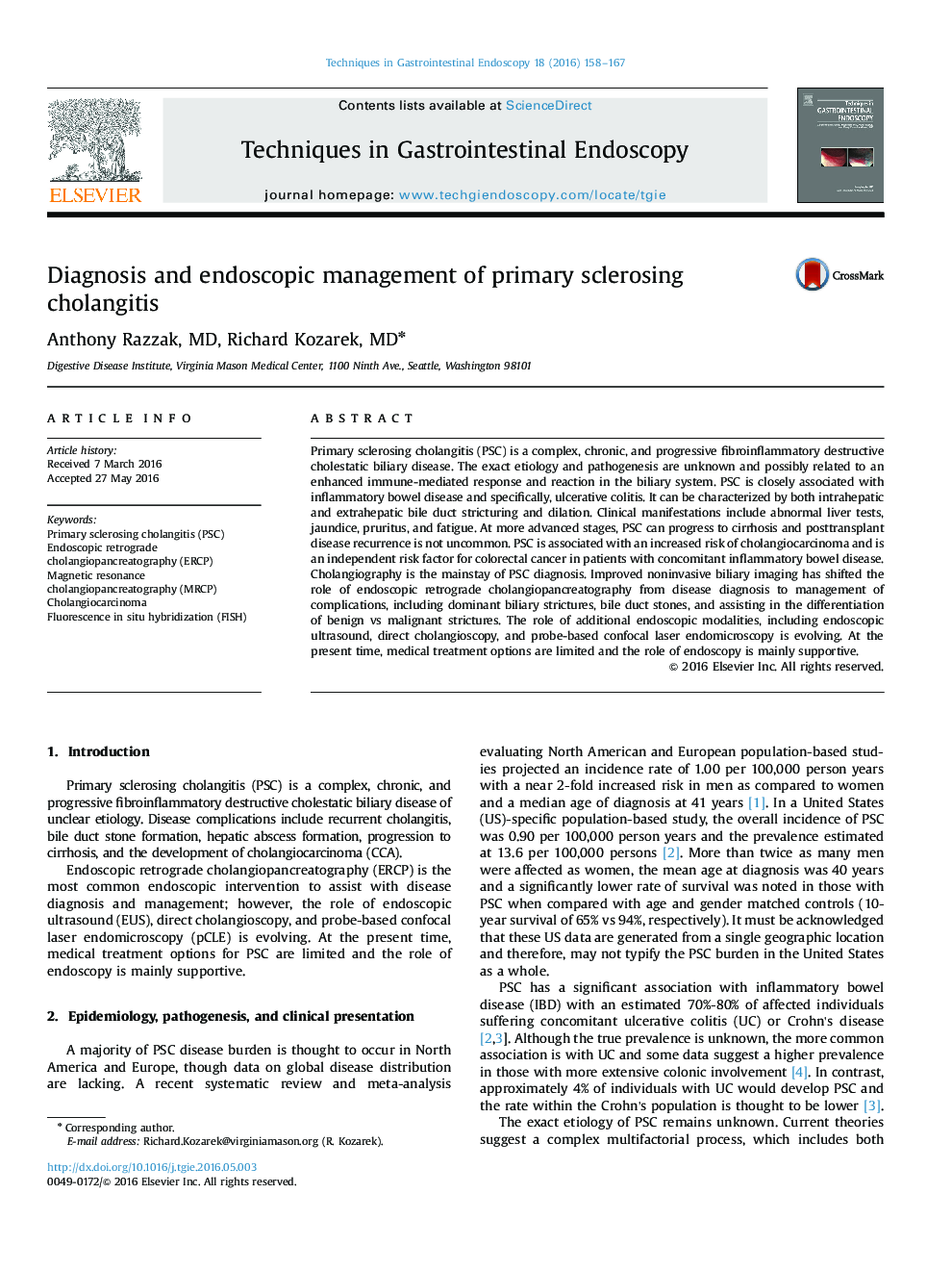| Article ID | Journal | Published Year | Pages | File Type |
|---|---|---|---|---|
| 5662288 | Techniques in Gastrointestinal Endoscopy | 2016 | 10 Pages |
Primary sclerosing cholangitis (PSC) is a complex, chronic, and progressive fibroinflammatory destructive cholestatic biliary disease. The exact etiology and pathogenesis are unknown and possibly related to an enhanced immune-mediated response and reaction in the biliary system. PSC is closely associated with inflammatory bowel disease and specifically, ulcerative colitis. It can be characterized by both intrahepatic and extrahepatic bile duct stricturing and dilation. Clinical manifestations include abnormal liver tests, jaundice, pruritus, and fatigue. At more advanced stages, PSC can progress to cirrhosis and posttransplant disease recurrence is not uncommon. PSC is associated with an increased risk of cholangiocarcinoma and is an independent risk factor for colorectal cancer in patients with concomitant inflammatory bowel disease. Cholangiography is the mainstay of PSC diagnosis. Improved noninvasive biliary imaging has shifted the role of endoscopic retrograde cholangiopancreatography from disease diagnosis to management of complications, including dominant biliary strictures, bile duct stones, and assisting in the differentiation of benign vs malignant strictures. The role of additional endoscopic modalities, including endoscopic ultrasound, direct cholangioscopy, and probe-based confocal laser endomicroscopy is evolving. At the present time, medical treatment options are limited and the role of endoscopy is mainly supportive.
